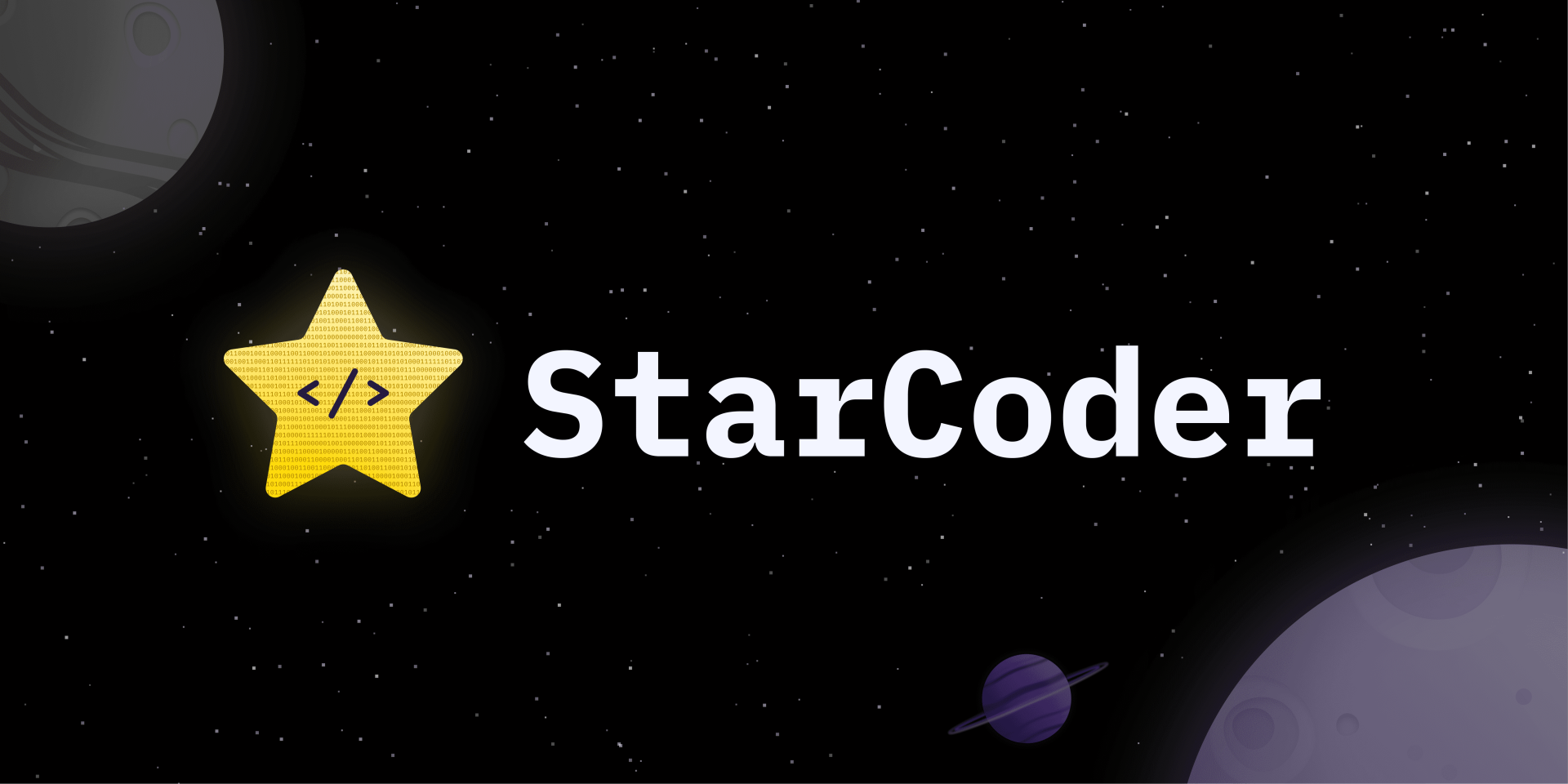如何离线运行大模型StarCoder
- 12/20/2023

由于业务场景的特殊性,需要实现大模型的部署,而在上一篇文章 如何运行Hugging Face大模型StarCoder 中介绍的方式涉及到访问huggingface.co,但由于网络限制,无法实现访问该网站。因此,为了实现完全离线的部署,即在运行时不依赖于任何外部网络,可以选择以下两种方法进行部署:
-
使用text-generation-inference
text-generation-inference是一个适用于Hugging Face大模型的轻量级推理服务。通过使用这个工具,您可以在本地环境中部署大模型,并在离线状态下运行推理。这种方法对于避免对外部网络的依赖非常有效。 -
使用transformers
transformers库是Hugging Face提供的用于自然语言处理模型的库,包括各种大型预训练模型。通过将模型下载并保存在本地,您可以在运行时不需要访问外部网络。这可以通过提前下载所需的模型权重和配置文件,然后在离线环境中加载它们来实现。
选择哪种方法取决于您的具体需求和业务场景。text-generation-inference提供了一种简单而直接的离线推理解决方案,而transformers库则为更多的灵活性和自定义性提供了支持。根据具体的业务和部署需求,可以选择适合的方式进行离线部署。
注意:此篇文章以已经下载模型到本地为前提,若想要下载模型到本地,可以参考上一篇文章如何运行Hugging Face大模型StarCoder。
使用text-generation-inference
这是Hugging Face的一个项目,旨在部署和服务大模型。在上一篇文章中,我们采用了text-generation-inference进行部署,并通过将模型下载到本地来实现纯离线部署。为了进一步简化此过程,只需在运行命令中添加参数-e HF_HUB_OFFLINE=1即可实现大模型的纯离线部署。
完整运行命令如下:
docker run --privileged=true -p 8080:80 --gpus all -v /root/huggingface/starCoder/data:/data -e HUGGING_FACE_HUB_TOKEN=YOUR-API-KEY -e HF_HUB_OFFLINE=1 -d ghcr.io/huggingface/text-generation-inference:1.3.3 --model-id bigcode/starcoder --max-total-tokens 8192
当日志打印如下内容时,说明无需访问Hugging Face,即可在离线环境中运行大模型:
INFO text_generation_launcher: Args { model_id: "bigcode/starcoder", revision: None, validation_workers: 2, sharded: None, num_shard: None, quantize: None, speculate: None, dtype: None, trust_remote_code: false, max_concurrent_requests: 128, max_best_of: 2, max_stop_sequences: 4, max_top_n_tokens: 5, max_input_length: 1024, max_total_tokens: 8192, waiting_served_ratio: 1.2, max_batch_prefill_tokens: 4096, max_batch_total_tokens: None, max_waiting_tokens: 20, hostname: "693b5c1038c0", port: 80, shard_uds_path: "/tmp/text-generation-server", master_addr: "localhost", master_port: 29500, huggingface_hub_cache: Some("/data"), weights_cache_override: None, disable_custom_kernels: false, cuda_memory_fraction: 1.0, rope_scaling: None, rope_factor: None, json_output: false, otlp_endpoint: None, cors_allow_origin: [], watermark_gamma: None, watermark_delta: None, ngrok: false, ngrok_authtoken: None, ngrok_edge: None, env: false }
INFO download: text_generation_launcher: Starting download process.
INFO text_generation_launcher: Files are already present on the host. Skipping download.
使用transformers
Transformers 🔗是Hugging Face开发的一款用于自然语言处理(NLP)的模型库。该库提供了一系列预训练的Transformer模型,这些模型在各种NLP任务中都表现出色。Transformers库支持PyTorch和TensorFlow,使其可以方便地在不同的深度学习框架中使用。
TensorFlow 🔗则是由Google开发的一款开源机器学习框架,专为构建和训练各类机器学习模型而设计。TensorFlow提供了丰富的工具和资源,支持深度学习、神经网络以及其他机器学习任务。其强大的性能和灵活性使得TensorFlow成为训练和部署大型模型的首选框架之一。
而PyTorch 🔗是Facebook开发的另一款深度学习框架,现在归属于Linux基金会旗下,被广泛用于学术界和工业界。PyTorch提供了直观的动态计算图,使得模型的构建和调试更加灵活直观。PyTorch在深度学习领域具有活跃的社区,并且被广泛用于研究和开发中。
如果您希望在离线环境中运行大型模型StarCoder,您可以选择使用transformers。不过,值得注意的是,使用transformers需要依赖PyTorch或TensorFlow。您可以选择在主机上安装PyTorch或TensorFlow并直接在主机上运行模型,或者在容器中安装PyTorch或TensorFlow。以下是在容器中安装PyTorch和transformers的步骤:
构建基础镜像
使用tensorflow/tensorflow:2.15.0作为基础镜像,并在基础镜像中安装PyTorch和transformers。以下是Dockerfile的内容:
FROM tensorflow/tensorflow:2.15.0
RUN pip install torch torchvision torchaudio -i https://pypi.tuna.tsinghua.edu.cn/simple
RUN pip install transformers -i https://pypi.tuna.tsinghua.edu.cn/simple
构建镜像
执行命令docker build -t tensorflow/tensorflow:2.15.0-torch .来构建镜像。
编写transformers代码
编辑vi /root/huggingface/starCoder-1/main.py,代码如下:
from transformers import pipeline
# Hugging Face model checkpoint for code completion
CHECKPOINT = "bigcode/starcoder"
# Device configuration: 0 for GPU, -1 for CPU
DEVICE = 0
prompt = "<fim_prefix><filename>test2.js\nconst a = 'a'\n\nconsole.log(<fim_suffix>)<fim_middle>"
# Initialize code generation pipeline
code_generator = pipeline("text-generation", model=CHECKPOINT, do_sample=True, device=DEVICE)
# Generation parameters
generation_parameters = {
"top_p": 0.9,
"return_full_text": False,
"num_return_sequences": 1,
"max_new_tokens": 256,
"temperature": 0.2,
"repetition_penalty": 1.2
}
# Generate code completion
generated_output = code_generator(prompt, **generation_parameters)
# Print the generated output
print(generated_output)
代码的第一部分设置了必要的变量。
-
CHECKPOINT变量设置为”bigcode/starcoder”,这是将用于文本生成的预训练模型的标识符。
-
DEVICE变量设置为0,这意味着如果有可用的CUDA设备,模型将在第一个CUDA设备上运行。如果device设置为-1,模型将在CPU上运行。
-
prompt变量设置为一个字符串,该字符串将用作文本生成的输入。
接下来,transformers库的pipeline函数用于创建一个带有指定模型和设备的文本生成管道。这个管道将用于根据输入提示生成文本。 gen_kwargs字典设置了将用于文本生成的参数。
最后,调用generator管道,输入提示和参数,然后打印输出。输出将是基于输入提示和参数生成的文本。
运行容器
执行以下命令,将编写的代码运行起来:
docker run --rm --gpus all -v /root/.cache/huggingface:/root/.cache/huggingface -v /root/huggingface/starCoder-1:/root/huggingface/starCoder-1 \
--workdir /root/huggingface/starCoder-1 -it tensorflow/tensorflow:2.15.0-torch python main.py
这里挂载了两个目录,一个是/root/.cache/huggingface,这个目录是transformers默认缓存/读取模型的,另一个是/root/huggingface/starCoder-1,这个目录是用来存放代码的,这里的代码是在容器中运行的,所以需要将代码挂载到容器中。
运行结果如下:
I tensorflow/core/util/port.cc:113] oneDNN custom operations are on. You may see slightly different numerical results due to floating-point round-off errors from different computation orders. To turn them off, set the environment variable `TF_ENABLE_ONEDNN_OPTS=0`.
I tensorflow/core/platform/cpu_feature_guard.cc:182] This TensorFlow binary is optimized to use available CPU instructions in performance-critical operations.
To enable the following instructions: AVX2 AVX512F AVX512_VNNI FMA, in other operations, rebuild TensorFlow with the appropriate compiler flags.
Loading checkpoint shards: 100%|████████████████████████████████████████████| 7/7 [01:46<00:00, 15.19s/it]
Setting `pad_token_id` to `eos_token_id`:0 for open-end generation.
[{'generated_text': 'a'}]
可以看到,成功运行了大模型StarCoder,并且代码补全结果也是正确的。
当然,如果每次执行都需加载模型,这样会导致响应速度非常的缓慢,这显然是不现实的。为了解决这个问题,我们可以将模型加载到内存中,再结合其他的Web框架构建一个API接口,每次调用大模型都调用这个接口,这样就可以实现大模型的快速响应。
编写FastAPI代码
FastAPI是一个现代、高性能的Web框架,适用于构建API。它基于Python 3.8+,设计简单而灵活,以满足各种需求。FastAPI采用异步框架,核心功能基于Starlette,同时利用Pydantic进行数据验证和序列化。
所以使用FastAPI来作为大模型需要的Web框架是比较合适的,当然你也可以使用其他的Web框架来实现,比如Flask、Django等。
使用FastAPI结合前面的transformers代码,最终/root/huggingface/starCoder-1/main.py的代码如下:
from fastapi import FastAPI
from pydantic import BaseModel
from transformers import pipeline
# Hugging Face model checkpoint for code completion
CHECKPOINT = "bigcode/starcoder"
# Device configuration: 0 for GPU, -1 for CPU
DEVICE = 0
# Initialize code generation pipeline
code_generator = pipeline("text-generation", model=CHECKPOINT, do_sample=True, device=DEVICE)
# Model parameters, customizable as needed
class CodeGenerationParameters(BaseModel):
top_p: float
return_full_text: bool
num_return_sequences: int
max_new_tokens: int
temperature: float
repetition_penalty: float
# Input data for code generation model
class CodeGenerationInput(BaseModel):
code_input: str
generation_parameters: CodeGenerationParameters
# FastAPI application instance
app = FastAPI()
@app.post("/")
async def generate_code(input_data: CodeGenerationInput):
"""
Endpoint to generate code completion based on the provided input and generation parameters.
Parameters:
- input_data: CodeGenerationInput object containing code input and generation parameters.
Returns:
- Generated code completion.
"""
# Extract input values
input_code = input_data.code_input
generation_params = input_data.generation_parameters
# Prepare keyword arguments for code generation
generation_kwargs = dict(
top_p=generation_params.top_p,
return_full_text=generation_params.return_full_text,
num_return_sequences=generation_params.num_return_sequences,
max_new_tokens=generation_params.max_new_tokens,
temperature=generation_params.temperature,
repetition_penalty=generation_params.repetition_penalty
)
# Generate code completion using the Hugging Face model
generated_code = code_generator(input_code, **generation_kwargs)
return generated_code
这里定义了一个/的接口,接口的输入是CodeGenerationInput,用于接收输入的代码和生成参数,接口的输出是generated_code,用于返回生成的代码。
优化基础镜像
由于代码中以及运行需要使用FastAPI、Uvicorn,所以需要在基础镜像中安装FastAPI及Uvicorn,所以需要优化基础镜像,Dockerfile如下:
FROM tensorflow/tensorflow:2.15.0
RUN pip install torch torchvision torchaudio -i https://pypi.tuna.tsinghua.edu.cn/simple
RUN pip install transformers -i https://pypi.tuna.tsinghua.edu.cn/simple
RUN pip install uvicorn fastapi -i https://pypi.tuna.tsinghua.edu.cn/simple
重新构建镜像
执行命令docker build -t tensorflow/tensorflow:2.15.0-torch .构建镜像
运行容器
在 FastAPI 应用程序中,通常使用 Uvicorn 来运行和部署应用,以提供高性能的异步服务器,以应对高并发请求的需求。为了运行一个 FastAPI 的 Web 程序,你可以使用以下命令:
uvicorn main:app --host 0.0.0.0 --port 80
这条命令的含义是运行名为 main 的模块中的 app 对象,该对象是 FastAPI 的实例。通过 --host 参数指定主机地址为 0.0.0.0,表示允许从任何 IP 地址访问,而 --port 参数指定了端口号为 80。这样,你就可以通过指定的主机和端口访问部署好的 FastAPI 应用程序。
所以最终的docker执行命令如下:
docker run --gpus all -p 8080:80 -v /root/.cache/huggingface:/root/.cache/huggingface -v /root/huggingface/starCoder-1:/root/huggingface/starCoder-1 \
-d --workdir /root/huggingface/starCoder-1 -it tensorflow/tensorflow:2.15.0-torch uvicorn main:app --host 0.0.0.0 --port 80
当日志打印以下内容时,说明模型加载成功,并且API已经启动成功了
I tensorflow/core/util/port.cc:113] oneDNN custom operations are on. You may see slightly different numerical results due to floating-point round-off errors from different computation orders. To turn them off, set the environment variable `TF_ENABLE_ONEDNN_OPTS=0`.
I tensorflow/core/platform/cpu_feature_guard.cc:182] This TensorFlow binary is optimized to use available CPU instructions in performance-critical operations.
To enable the following instructions: AVX2 AVX512F AVX512_VNNI FMA, in other operations, rebuild TensorFlow with the appropriate compiler flags.
Loading checkpoint shards: 100%|████████████████████████████████████████████| 7/7 [01:44<00:00, 14.86s/it]
INFO: Started server process [1]
INFO: Waiting for application startup.
INFO: Application startup complete.
INFO: Uvicorn running on http://0.0.0.0:80 (Press CTRL+C to quit)
测试API
如果需要测试API进行验证,可以请求容器地址或本机地址,发现正常响应,能够返回大模型处理的结果:
# 请求
curl -i --request POST 'http://localhost:8080' --header 'Content-Type: application/json' --header 'Accept: */*' --header 'Connection: keep-alive' --data '{
"inputs": "<fim_prefix><filename>test2.js\nconst a = '\''a'\''\n\nconsole.log(<fim_suffix>)<fim_middle>",
"parameters": {
"top_p": 0.9,
"return_full_text": false,
"num_return_sequences": 1,
"max_new_tokens": 256,
"temperature": 0.2,
"repetition_penalty": 1.2
}
}'
# 响应
HTTP/1.1 200 OK
server: uvicorn
content-length: 24
content-type: application/json
[{"generated_text":"a"}]
总结
本文介绍了两种离线运行大模型StarCoder的方法,分别是使用text-generation-inference和transformers。
前者是Hugging Face提供的一个项目,旨在部署和服务大模型。 后者是Hugging Face提供的一个用于自然语言处理(NLP)的模型库,该库提供了一系列预训练的Transformer模型,这些模型在各种NLP任务中都表现出色。
通过将模型下载并保存在本地,可以在运行时不需要访问外部网络。这可以通过提前下载所需的模型权重和配置文件,然后在离线环境中加载它们来实现。根据具体的业务和部署需求,可以选择适合的方式进行离线部署。
Depencies:
